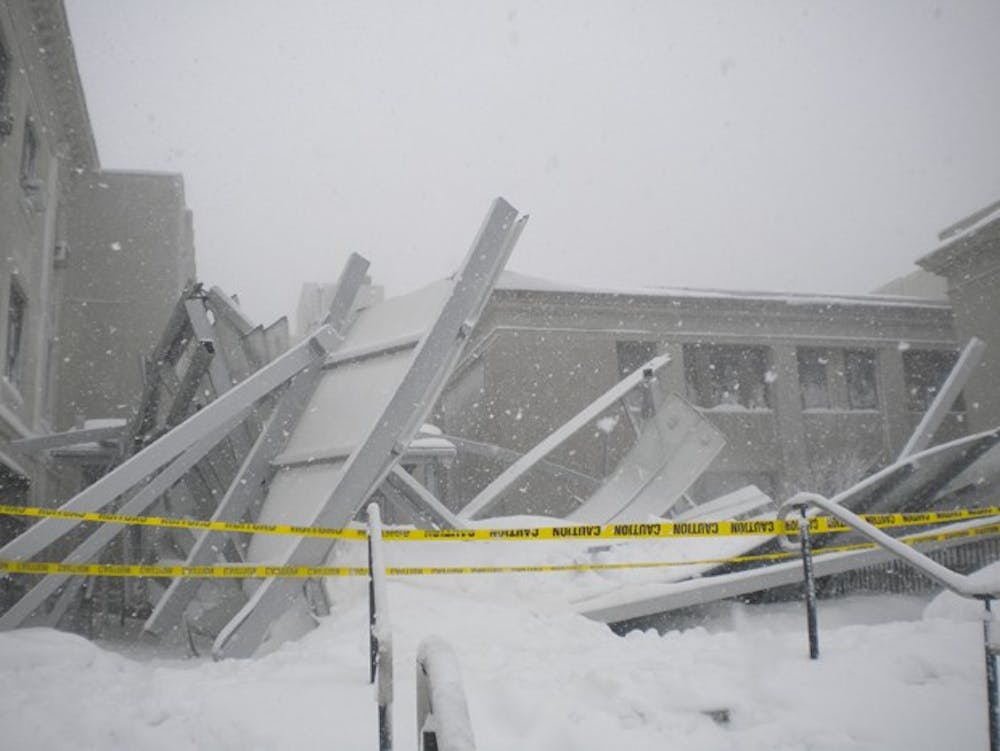After a year of snow and precipitation-fueled puns, AU officials say they are now better equipped to deal with winter’s natural disasters.
The blizzards of February 2010, known as “Snowpocalypse” and “Snowmageddon,” tested the strength of AU’s emergency preparedness. In the process, it set a precedent for handling future storms.
Preparation for short-term and long-term snowstorms is the same, according to Chris Moody, executive director of Housing and Dining Programs.
Groundskeepers and snow removal crews begin planning for winter storms as early as November, according to Mark Feist, assistant director of Facilities Management. Preparation involves equipment maintenance and adding snowplows to University trucks.
First, an emergency management work team looks at the University’s protocols for weather-related emergencies and creates a plan based on what is most relevant to the time of year and the weather situation, Moody said.
Facilities Management is then in charge of stockpiling salt and equipment to clear roadways and sidewalks. From there, the challenge is managing the actual storm and student reaction.
To combat last year’s storms, the entire Facilities Management staff was housed on-campus and worked around the clock.
“After 10 hours of operating equipment, you’re pretty burned out,” said David Wilson, a grounds maintenance zone supervisor. “Sometimes we have to drop back and let it just come down. There's no way to keep up.”
Once a storm starts, the University focuses on communicating with students about upcoming activities on campus, such as sporting events, movie nights and dances.
“Snowmageddon” helped show Housing and Dining how to plan successful events in bad weather, should another storm occur.
“Last year was a good case study in what activities would attract students and what activities would not,” Moody said. “More informal things worked better because people just wanted to get out of their rooms and interact.”
In the event of another large snowstorm, Housing and Dining plans to work with information technology resources to expand communication to students who live off-campus and cannot receive e-mails through the residence halls.
Professors used Blackboard, Wimba Classroom, Google Wave, Facebook, Microsoft PowerPoint, Skype, e-mail and telephones to communicate with students during the storm. Twenty-one classes were held via Wimba during last year’s storms, according to the Center for Teaching, Research and Learning.
CTRL Director James Lee believes AU faculty is better prepared for another blizzard because of online classes. Since last February, enrollment in CTRL’s online tools training course has doubled.
“Just because we had a big snowstorm does not mean we stop [teaching],” Lee said. “It can happen again even if it was a once-in-a-lifetime experience … Swine flu kind of brought [emergency preparation] to the conscience, but ‘Snowmageddon’ made it a reality that [we] won’t forget.”
Weather emergencies require that essential staff members still be able to reach the University. Last year, Bon Appétit workers stayed in Georgetown hotels and 40 AU employees were housed on-campus over the course of a week, according to Moody.
“Snow events take major commitment from the staff to be away from their families and to be here to provide services,” Moody said. “It’s great when students appreciate the [staff] that don't have a day off of work like many others have. Those are the real heroes of a snow event.”
Melissa Winn and staff writer Abby Fennewald contributed to this story.
news@theeagleonline.com





